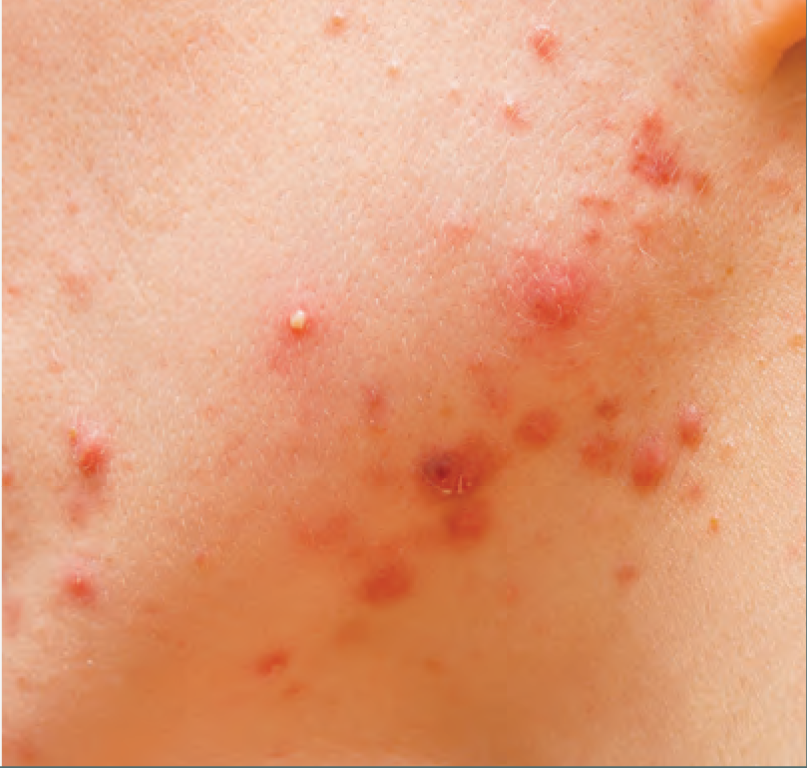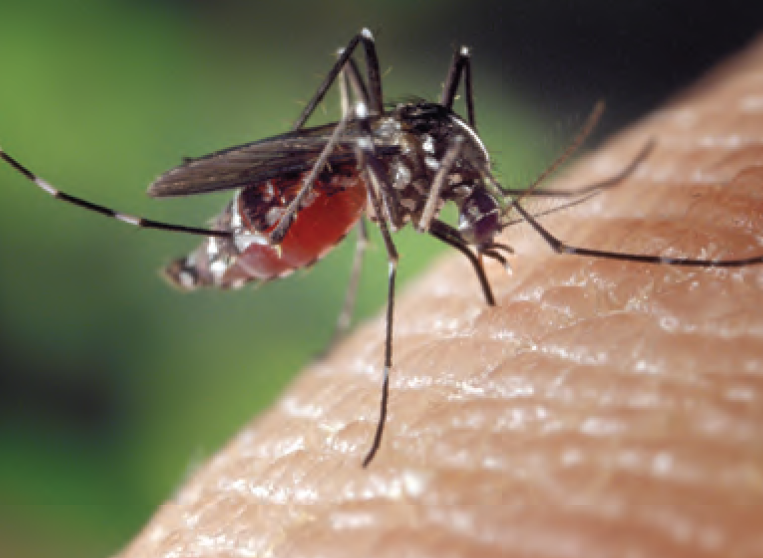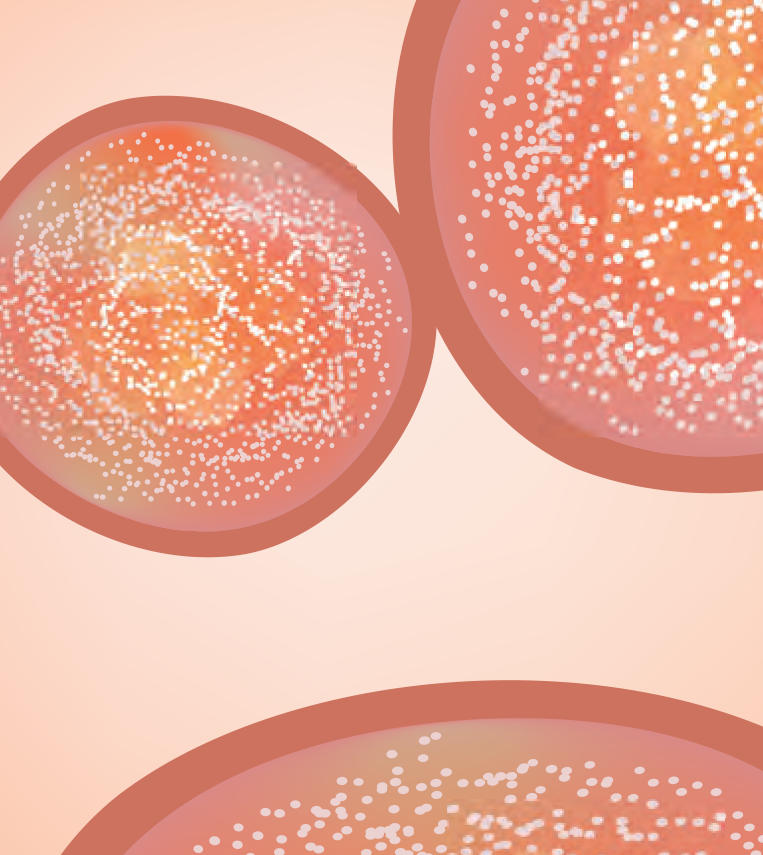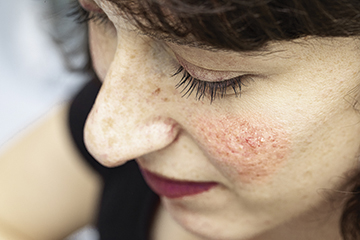By Ted Rosen, MD, FAAD, Editor-in-Chief
Off-label Pearl

Patients receiving epidermal growth factor receptor inhibitors for the treatment of cancer are prone to develop severe acneiform eruptions. This adverse event may be prevented or lessened in severity by prophylactic administration of oral tetracycline derivatives at typical therapeutic doses. To read more: Yu Z, et al. Evaluation of a comprehensive skin toxicity program for patients treated with epidermal growth factor receptor inhibitors at a cancer treatment center. JAMA Dermatol. 2020;Jul 1;e201795.
COVID-19
It appears that patients who have recovered from COVID-19 can be reinfected, and that—at least—humoral immune response wanes over time. This calls into question the potential need for multiple vaccinations over time.
To read more: Torres DA, et al. Reinfection of COVID-19 after 3 months with a distinct and more aggressive clinical presentation: case report. J Med Virol. 2020 Oct 28. https://pubmed.ncbi.nlm.nih.gov/33112002/; AlFehaidi A, et al. A case of SARS-CoV-2 re-infection. J Infect. 2020 Oct 25. https://www.ncbi.nlm.nih.gov/pmc/articles/PMC7585726/; Seow J, et al. Longitudinal observation and decline of neutralizing antibody responses in the three months following SARS-CoV-2 infection in humans. Nat Microbiol. 2020 Oct 26. https://pubmed.ncbi.nlm.nih.gov/33106674/
Infectious diseases

What is a “normal” temperature? Is it really 98.60F (370C), as determined by measurements taken in Germany in 1851? Based on a 10-year study done at Stanford University, it appears that the “normal” body temperature in industrialized countries has been falling every decade since 1860, and may be at (or near) 97.50F (36.40C) at present. To read more: Protsiv M, et al. Decreasing human body temperature in the United States since the industrial revolution. Elife. 2020 Jan 7;9:e49555. https://www.ncbi.nlm.nih.gov/pmc/articles/PMC6946399/

Alternating 0.1 ml intralesional injections of Candida antigen and purified protein derivative (PPD), given every 2 weeks for a total of 3 months, led to complete clearance of nearly 71% of common warts. Alternating therapy proved superior to Candida antigen, PPD, or saline placebo alone, given on the same schedule. To read more: Nofal A, et al. Alternating intralesional purified protein derivative and Candida antigen versus either agent alone in the treatment of multiple common warts. J Am Acad Dermatol. 2020;83(1):208-210. https://pubmed.ncbi.nlm.nih.gov/32006600/
Approved in the US in 2014, miltefosine is an effective oral treatment for New World leishmaniasis. The dosage is 50 mg BID (patient weight under 45 kg) or TID (patient weight over 45 kg) for 28 days. Significant numbers of patients develop nausea, vomiting, motion sickness, and headache. The drug is contraindicated in pregnancy. To read more: Chan CX, et al. Cutaneous leishmaniasis successfully treated with miltefosine. Cutis 2020;106:206-209. https://www.mdedge.com/dermatology/article/229918/infectious-diseases/cutaneous-leishmaniasis-successfully-treated?sso=true

In a small Iranian study, clarithromycin 500 mg BID proved equal in efficacy to intramuscular pentavalent antimony in the treatment of Old World leishmaniasis. To read more: Zabolinejad N, et al. Evaluating the effect of oral clarithromycin on acute cutaneous leishmaniasis lesions compared with systemic glucantime. J Dermatolog Treat. 2020 Sep 24:1-6. https://pubmed.ncbi.nlm.nih.gov/32972289/
Rheumatologic Diseases
Be careful when diagnosing pyoderma gangrenosum. Cutaneous polyarteritis can almost exactly mimic pyoderma gangrenosum clinically. Biopsy and clinical context may be required to separate the 2 entities. To read more: Pineider J, Woen J, West L, et al. Cutaneous polyarteritis nodosa with clinical features of pyoderma gangrenosum. JAAD Case Reports. Sep 2020. https://www.jaadcasereports.org/article/S2352-5126(20)30660-3/fulltext
Psoriasis
While large-scale studies are lacking, there is growing evidence that topical cannabinoid products may be useful for the mitigation of signs and symptoms of inflammatory skin disorders such as psoriasis. For patients who prefer “natural” products or who have insufficient response or atrophy following the use of topical corticosteroids, a trial of readily available topical cannabinoids may be warranted. To read more: Friedman AJ, Momeni K, Kogan M. Topical cannabinoids for the management of psoriasis vulgaris. Report of a case and review of the literature. J Drugs Dermatol. 2020;19:794-795. https://pubmed.ncbi.nlm.nih.gov/32845594/
Psoriasis in skin of color may present with more violaceous and less erythematous lesions, reduced scaling, greater scalp involvement, and much higher risk of post-inflammatory dyschromia. To read more: Nicholas MN, et al. Psoriasis in patients of color: differences in morphology, clinical presentation, and treatment. Cutis. 2020;106(suppl 2):7-10. https://pubmed.ncbi.nlm.nih.gov/33104098/

While endemic deep fungal infection has been reported concomitant to the use of TNF-alpha inhibitors, there is no evidence that administration of IL-17, IL-12/23 or IL-23 inhibitors increases the risk of deep fungal infections. To read more: Lee MP, et al. Risk of deep fungal infections during IL-17 and IL-23 inhibitor therapy for psoriasis. Cutis. 2020;106:199-205. https://pubmed.ncbi.nlm.nih.gov/33186421/
Contact Dermatitis
Moisture-associated skin damage can occur with urinary or fecal incontinence, around stoma and cutaneous wounds, and as intertriginous dermatitis. Meticulous adherence to proper skin care can help alleviate these forms of skin irritation. To read practical and easily implemented tips, go to: Fletcher J, Beeckman D, Boyles A, et al. International best practice recommendations: prevention and management of moisture-associated skin damage (MASD). Wounds International. 2020. Available at www.woundsinternational.com.
Hidradenitis suppurativa
A survey of more than 700 hidradenitis patients was conducted online and at HS specialty clinics. Few (12%) felt that select foods improved the disease. But nearly one-third readily identified dietary components that aggravated HS symptoms. Most commonly implicated were sweets (67.9%), bread/pasta/rice (51.1%), dairy (50.6%), and high‐fat foods (44%). The inescapable conclusion is that “HS patients may benefit from receiving dietary counseling as part of a comprehensive HS management plan.” To read more: Fernandez JM, et al. Alleviating and exacerbating foods in hidradenitis suppurativa. Dermatol Ther. 2020 Aug 29:e14246. https://pubmed.ncbi.nlm.nih.gov/32860476/
Itch
According to a comprehensive meta-analysis of randomized controlled studies, gabapentin is an effective management for uremic pruritus. Adverse events include dizziness, drowsiness, and somnolence. To read more: Eusebio-Alpapara KMV, et al. Gabapentin for uremic puritus: a systematic review of randomized controlled trials. Int J Dermatol. 2020;59:412-422. https://pubmed.ncbi.nlm.nih.gov/31777066/
Cutaneous oncology
Palliative therapy for inoperable non-melanoma skin cancers is a reasonable consideration, especially in older patients. For example, Hedgehog pathway inhibitors may be utilized, not to “cure” advanced basal cell carcinoma, but rather to improve quality of life, reduce morbidity, and preserve function when large tumors occur near the facial orifices. To read more: Lam C, et al. Palliative use of Vismodegib. Dermatol Surg. 2020;46(2):272-276. https://pubmed.ncbi.nlm.nih.gov/30789523/
Nicotinamide 500 mg twice a day may well be a sustainable therapy for patients with large numbers of otherwise refractory actinic keratosis. To read more: Paugam E, Dreno B. Is nicotinamide a sustainable therapy for resistant actinic keratoses? J Eur Acad Dermatol Venereol. 2020;34(10):e624-e626. https://pubmed.ncbi.nlm.nih.gov/32311791/
Using the SEER cancer database (1973-2014), researchers have noted that primary cutaneous melanoma survivors are at increased risk for both ocular melanoma and other non-cutaneous malignancies. Secondary malignancies occurred in a wide range of types. To read more: Vakharia PP, et al. Risks for noncutaneous second primary malignancy in cutaneous malignant melanoma survivors: an analysis of data from the Surveillance, Epidemiology, and End Results (SEER) program. Int J Dermatol. 2020;59:463-468. https://pubmed.ncbi.nlm.nih.gov/31971260/
Drugs and Devices
While several new topical agents are (or will soon be) available to treat hyperhidrosis, and botulinum toxin injections may also be used, these interventions are quite expensive. A retrospective review of 1658 patients treated over 12 years with oral oxybutynin suggests that over 70% of hyperhidrosis patients can be managed successfully with this inexpensive agent. Oxybutynin, an anticholinergic drug, was effective for all hyperhidrosis sites; the most common adverse event was dry mouth (25%). Considering that a month’s supply of this agent (at a dose of 5 mg BID) can be obtained for less than $10, a trial might be considered. To read more: Wolosker N, et al. Long-term results of the treatment of primary hyperhidrosis with oxybutynin: follow-up of 1,658 cases. Int J Dermatol. 2020;59:709-715. https://pubmed.ncbi.nlm.nih.gov/32301117/
General Dermatology
The British Association of Dermatologists issued a third update on genital lichen sclerosus. Highlights include enumeration of co-morbidities (females: thyroid disease; males: coronary artery disease and diabetes), general recommendations to lose weight and discontinue smoking, and validation of daily use of potent topical steroids for 1-3 months to gain control. A ½ fingertip unit should be used per application. Maintenance involves application of low- to medium-potency steroid 1-2 times weekly. The goals of therapy are to relieve symptoms, prevent scarring, preserve sexual functioning, and prevent neoplasia. To read more: Lewis FM, et al. British Association of Dermatologists guidelines for the management of lichen sclerosus, 2018. Br J Dermatol. 2018;178(4):839-853. https://pubmed.ncbi.nlm.nih.gov/29313888/
According to the most recent Medscape survey of 5250 physicians, representing 29 specialties, 25% felt that it was acceptable to become involved in a romantic/sexual relationship with a patient 6-12 months after the professional association was discontinued. Only 12% felt this way in 2010.
In a cross-sectional, national interview study of nearly 24,000 patients, about 20% of those surveyed felt that their health care providers were insufficiently familiar with their culture and medical traditions. This led to a feeling of disrespect. The message here is to make an attempt to broaden one’s horizons and take into account ethnic health practices. To read more: Blewett LA, et al. Patient perspectives on the cultural competence of US health care professionals. JAMA Netw Open. 2019;2(11):e1916105. https://www.ncbi.nlm.nih.gov/pmc/articles/PMC6902827/
Acne
A study performed at the University of Naples, Italy, concluded that 92% of acne patients were satisfied with medical care delivered via teledermatology. The implication for our future practice is clear. To read more: Ruggiero A, et al. Teledermatology for acne during COVID-19: high patients’ satisfaction in spite of the emergency. J Eur Acad Dermatol Venereol. 2020 June 13. https://www.ncbi.nlm.nih.gov/pmc/articles/PMC7323158/
Are you aware of the “skin acceptance movement”? This largely social media-driven movement aims to remove the social stigma from acne, making it almost a “trendy” skin finding. While there is clear benefit to making acne acceptable (and even “cool”) to have, there is a risk that it might also discourage seeking treatment for a very responsive disorder! To read more: Yumeen S, Abrouk ME, Maderal AD. Acne, the new trend? A discussion of the emerging social movement to embrace acne vulgaris. Int J Dermatol. 2020;59:1276-1277. https://pubmed.ncbi.nlm.nih.gov/32506439/
Rosacea
As is true with acne, rosacea is often best managed with combination therapy. Mixing topical alpha agonist with either systemic or topical anti-inflammatory agents, followed by adjunctive energy-based therapies, may be required to address the patient’s constellation of signs and symptoms. To read more: Stein-Gold L, Baldwin H, Harper JC. Rationale for use of combination therapy in rosacea. J Drugs Dermatol. 2020;19:929-934. https://pubmed.ncbi.nlm.nih.gov/33026776/


